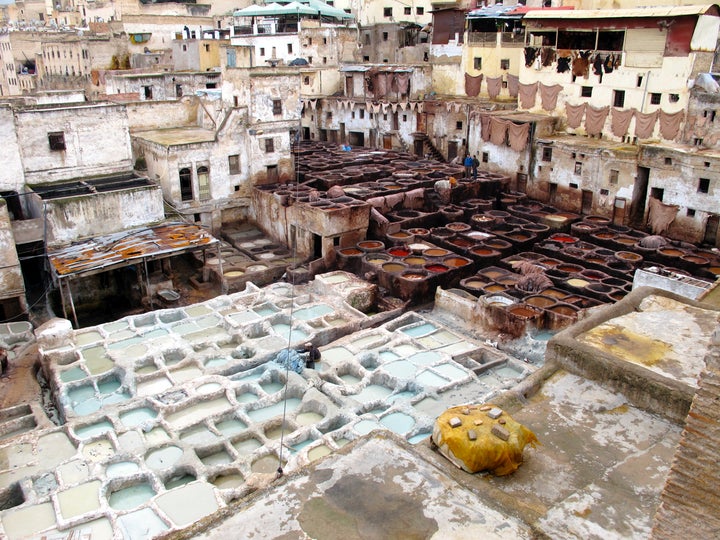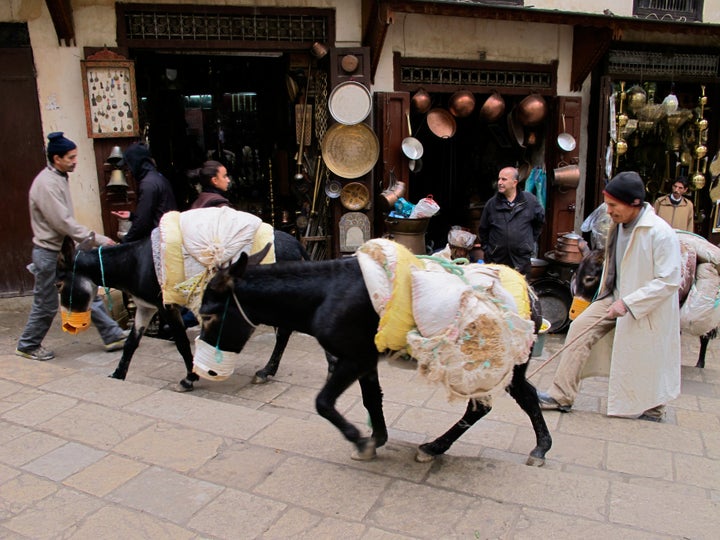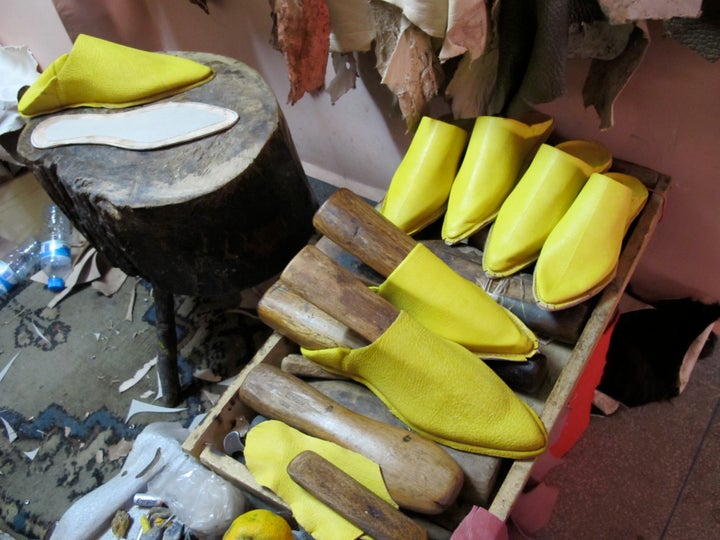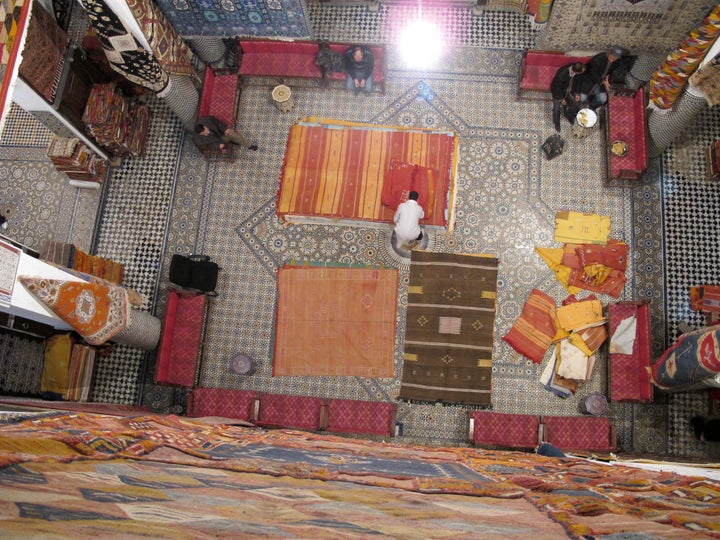Just as I was about to proclaim the disappearance of the Arabia of the imagination, there she was: the Queen of all medieval cities, the heir to the magical world of the “1001 Arabian Nights”
I had been searching for the Arabia of my childhood imagination for a long time. I had searched for the archetypal magical world of the 1001 Arabian Nights, “The Thief of Baghdad,” the magic carpets, the mysterious towns with narrow streets, the noisy colorful bazaars, the Muslim chants and unfamiliar music. I had searched in the heart of Asia (Kyrgyzstan, Uzbekistan, Iran), in the Near East (Egypt, Syria, Lebanon), on the Arabian Peninsula (Emirates, Oman). Nothing. In Central Asia the communist era has destroyed all elements of the traditional past, forcing a homogenization of all its cultures. Iran was given a double blow: first by the Shah with his Westernization, and then by the Ayatollahs with their fanatic Islamization, which left almost nothing of the old standing. The old Persian towns of Kashan and Yazd are faint reflections of their glorious past. Iraq and Syria, striving to become modern and imitate the West, have preserved little of their unique culture, and are now sadly one huge war zone. The Arabian Peninsula, aspiring to become the Arab equivalent of futuristic Japan, has become a medley of highways, skyscrapers, shopping malls, and artificial islands! As for the famous old markets of the Middle East, such as the El-Khalili bazaar of Cairo, they are nothing but soulless tourist façades.
I was about to proclaim the disappearance of the Arabia of the imagination – at least in the form that had been luring Europeans for centuries. However, just as I was about to depart from the region where the old Arabian civilization once flourished, at the Westernmost tip of Africa I discovered the only country that has preserved a big part of the old Arabian world intact: Morocco. Ironically, Morocco is the least “Arab” of the Arab countries, due to its strong indigenous Berber culture, and the modern French and cosmopolitan influences. Yet, the Moroccans have managed to navigate masterfully through all influences, and to modernize without losing their soul. No other Arab country can claim as many well-preserved medieval towns as Morocco. Marrakesh, Essaouira, Meknes, Sefrou, Chefchaouen, to name the ones that stand out, are incredible towns, each with its own unique Moroccan character. But above all of these town-jewels, there is one city that keeps alive the magical world of our imagination. Sitting alone on its royal throne, it is the Queen of all medieval cities, the true heir of the 1001 Arabian Nights: Fez.


Fes el Bali, the Medina or old town of Fez, is the most fascinating and enchanting town of both the Arab World and the African continent. Built in the 8th century C.E., Fez was the capital of Morocco until 1912. Boasting the oldest continuously operating university in the world, Al Quaraouiyine, which was founded in 859 C.E., Fez has been the cultural, social, and spiritual heart of Morocco for centuries. Today, the old town of Fez is the only accessible authentically preserved living medieval city in the world. It is living, because unlike most other medieval cities, it is not artificially maintained just for tourists. Encircled by high walls stretching for eight kilometers, the Medina’s inhabitants live a normal life and work there, preserving their centuries-old crafts and skills. And although many modern comforts and amenities, like electricity and mobile phones, are of course present, the rhythm and pace of the city is the same as it has been for many centuries. This is helped by the fact that the Medina is the largest car-free pedestrian area on the planet, and it is also much less touristy than the other great towns of Morocco.
You need not read anything about Fez beforehand. You need no map, no list of sites. For there is only one way to explore it: enter Fez through its magnificent blue gate, get lost in its labyrinth-like alleyways, and allow it to consume, absorb, and assimilate you.
As you meander under a hundred series of arches, just observe the women filling their jugs with water at the communal fountains, the faithful taking off their slippers before entering the mosque for prayer, the children playing in the narrow streets. Walk along the covered markets, the wonderful squares, pass through the metal-workers’ quarter, the baboush slippers quarter, the fabric market, the legendary tanneries. Admire the interlaced blue glazed tiles and intricate woodwork adorning the buildings’ façades. Step into hidden basements to see stained glass lanterns and bronze chandeliers, and enter into the grand multi-storied riads to finally discover your own Arabian magic carpet! And make your walk “a long one” so that “with what pleasure, what joy!” you may stop…
“to buy fine things, mother of pearl and coral, amber and ebony, sensual perfume of every kind— as many sensual perfumes as you can”
… as Cavafy says in his immortal poem “Ithaca,” which alludes to this Arabia of the imagination. Cavafy’s deliberate focus on smells actually touches the heart of hearts of Fez. For nothing moves the visitor’s soul as strongly as the mixture of Fez’s disparate smells that constantly change and recombine as one meanders, creating a ceaseless stream of sensual phantasmagoria: the smell of worked leather mixed with that of oxtail brewed in casserole, or the smell of freshly laundered shirts drying in the sun combined with the refined scents of mint tea enjoyed by old men in jelabiahs. The smells, but also the sounds of Fez: the merchants’ voices, the butchers’ commanding shouts, the clanking of large metal bowls carried by donkeys, the muezzin’s repeated calls for prayer. Smells and sounds are what in the end conquer the visitor, who, as Cavafy suggests in his poem, ends up postponing forever the return to his lodging, subconsciously pretending to lose his way back.
Fez is the archetypal Arabian city of our childhood imagination.
And, surprisingly, it actually exists.


Nicos Hadjicostis is a writer and world-traveler. As part of his 6.5-year continuous around the world journey, he explored Morocco for five weeks. He has just published his first book inspired by this journey entitled, Destination Earth – A New Philosophy of Travel by a World-Traveler, that is available on Amazon and Barnes & Noble.